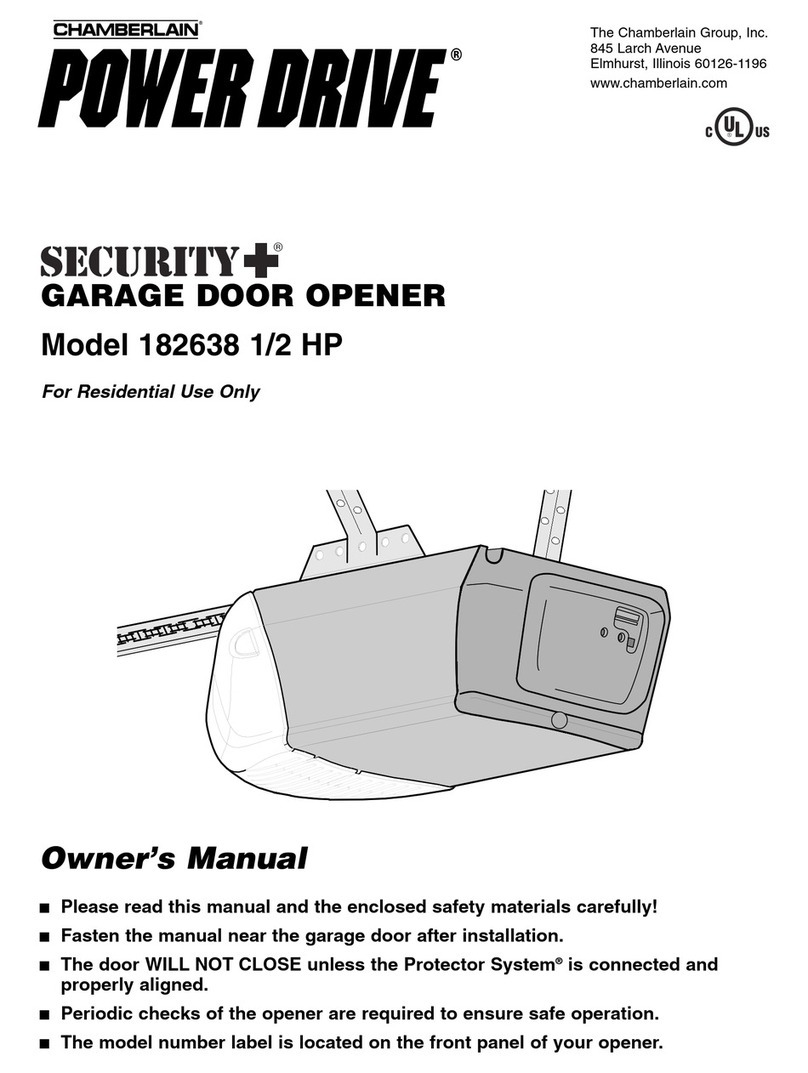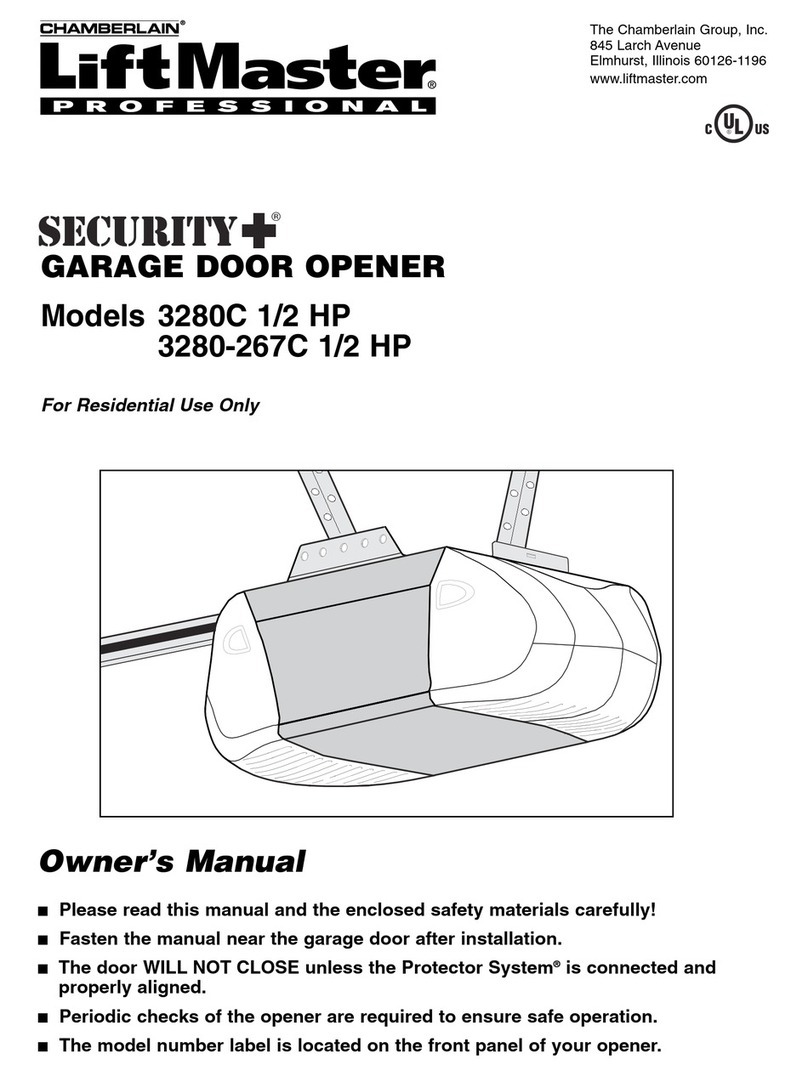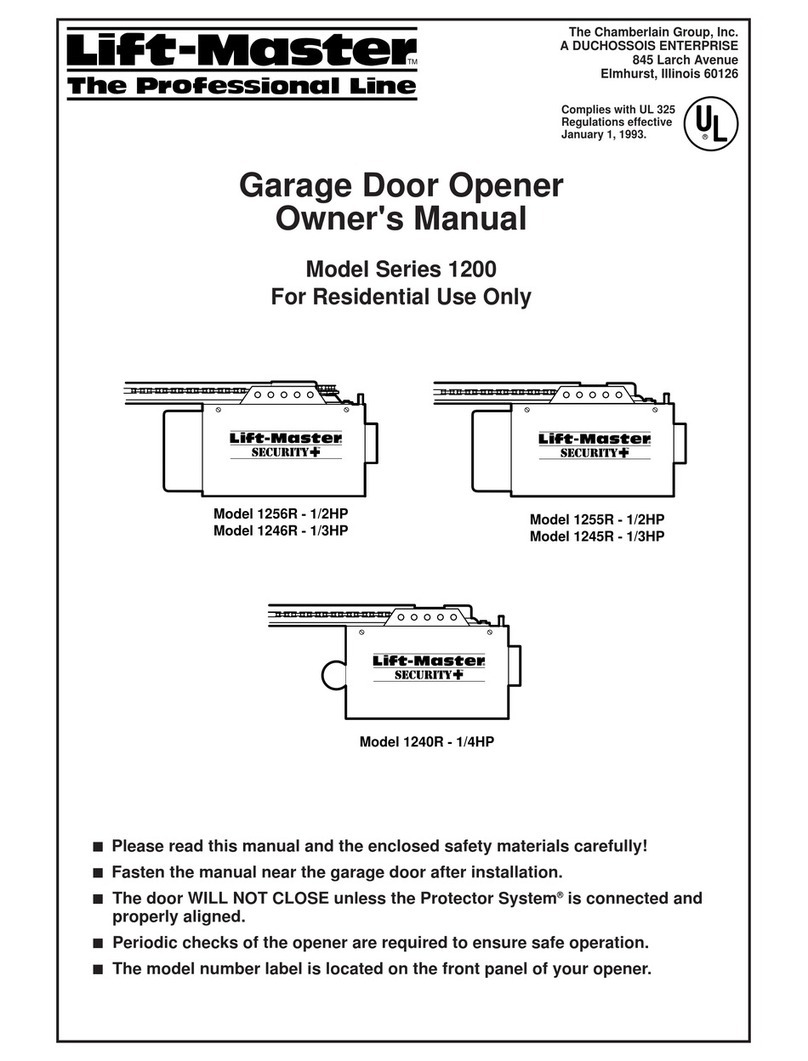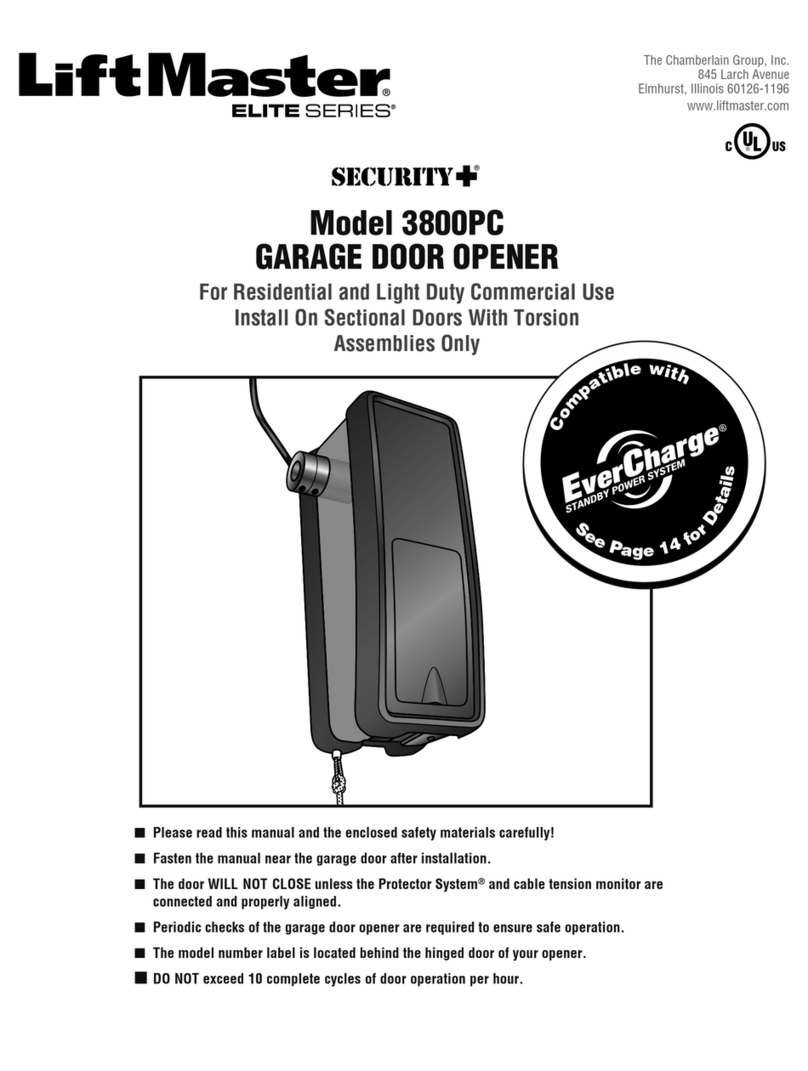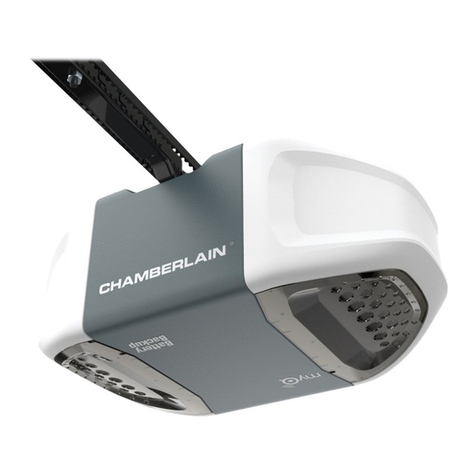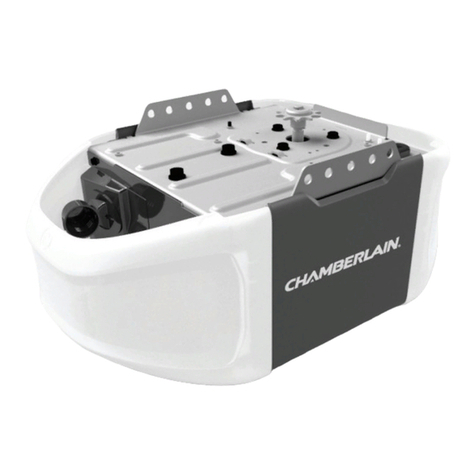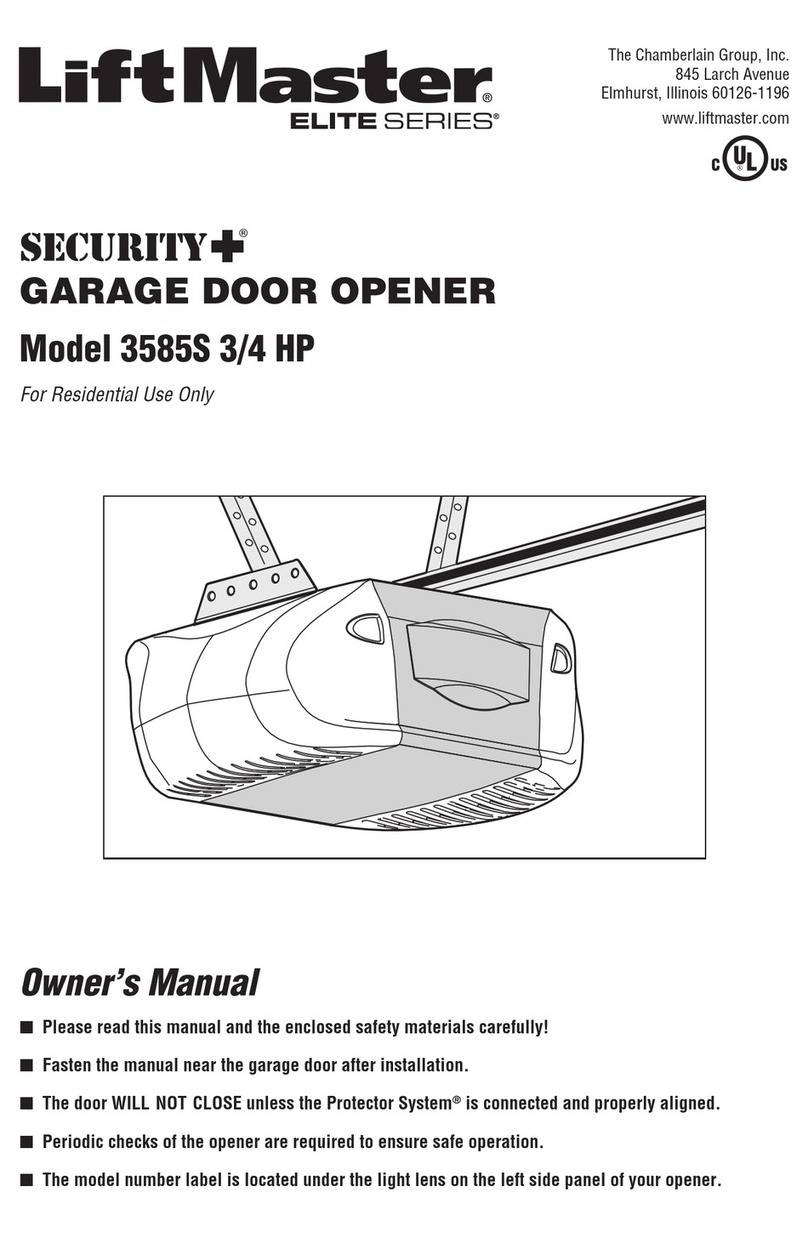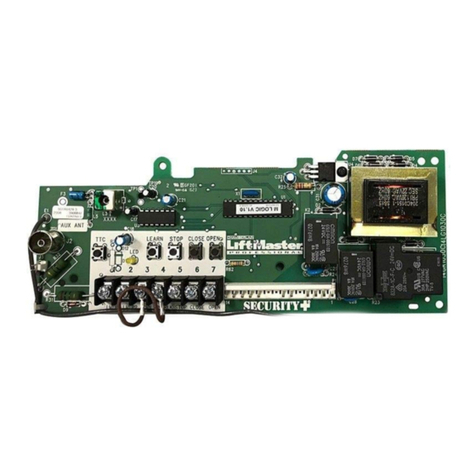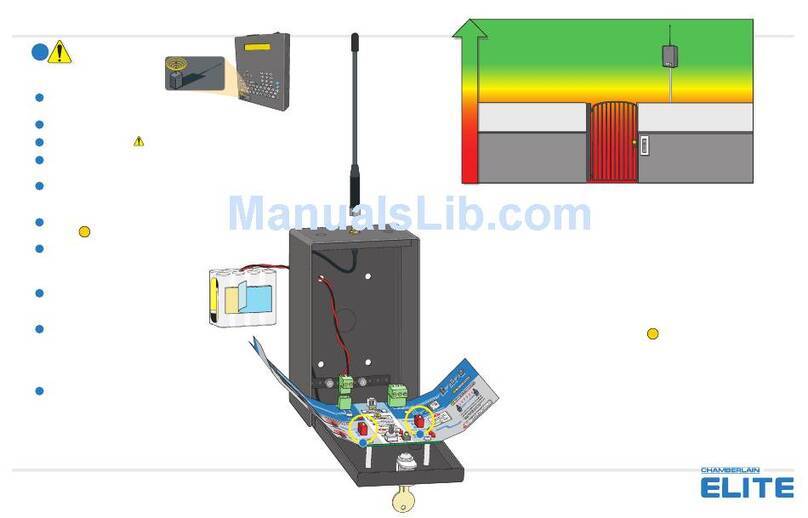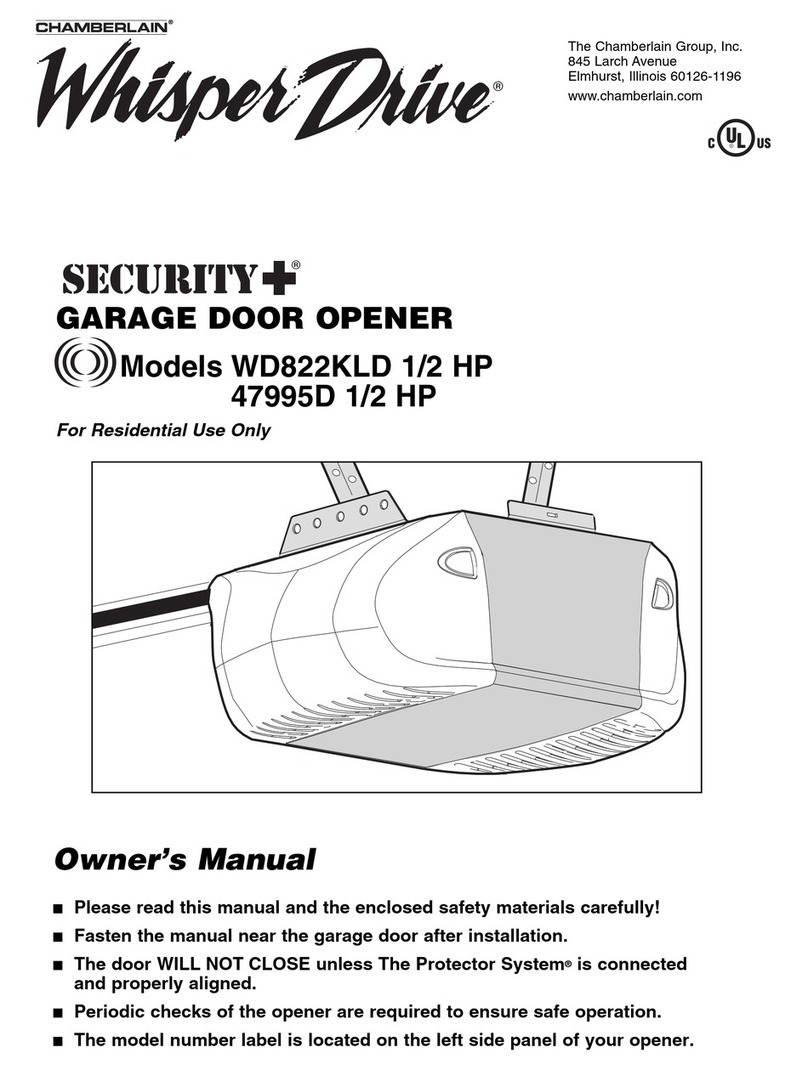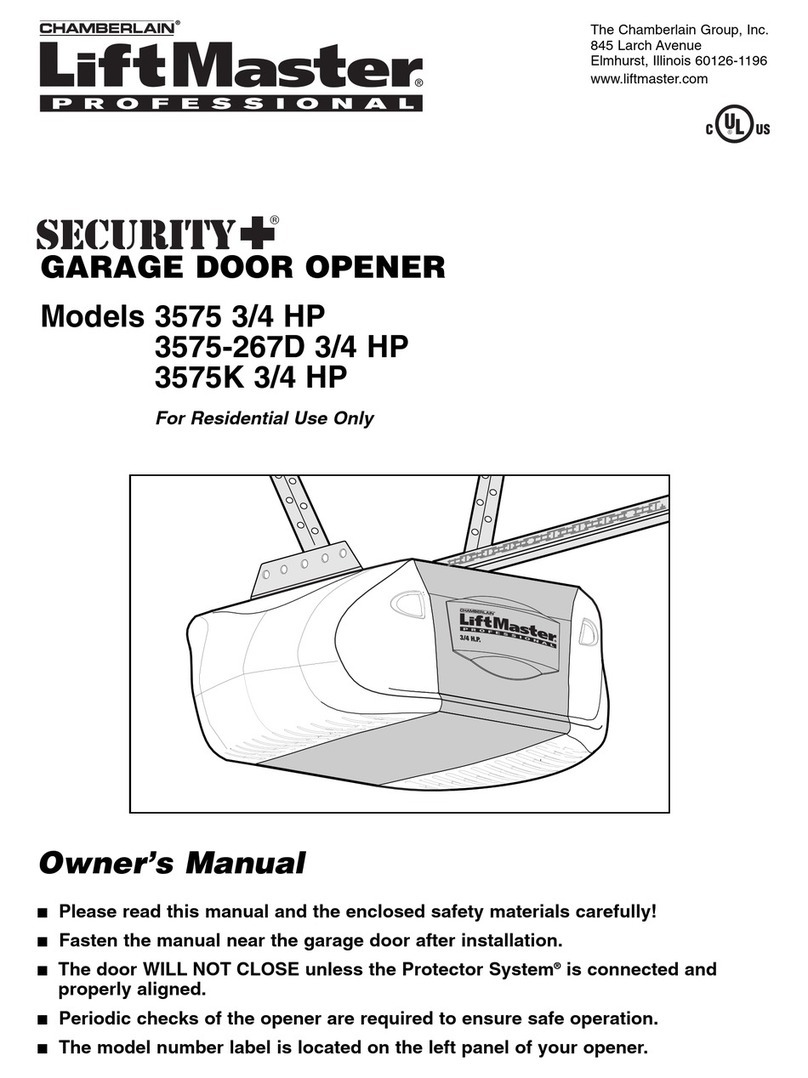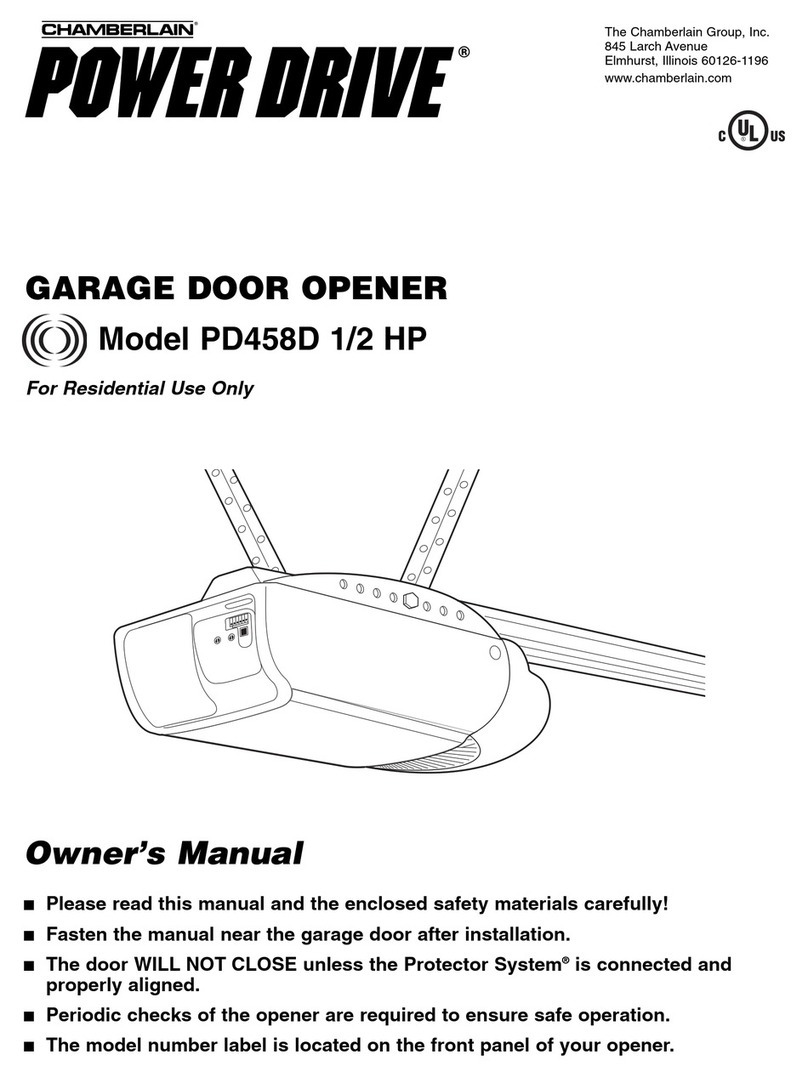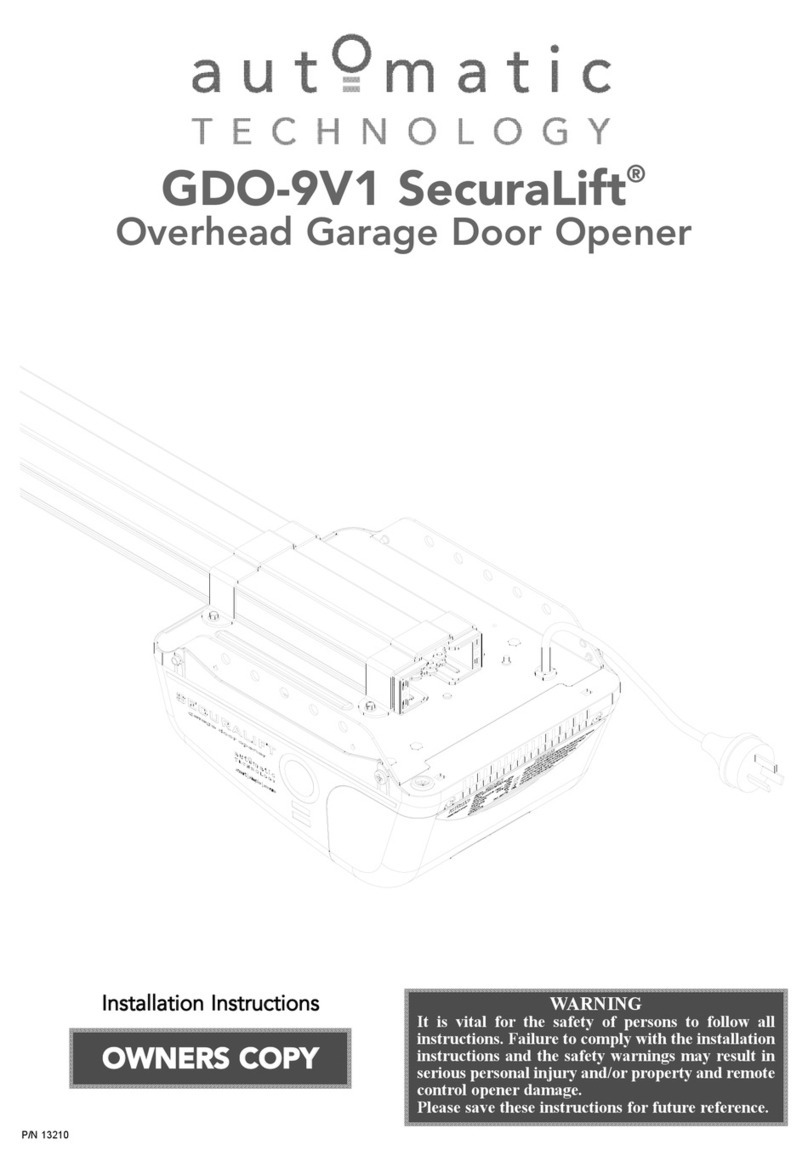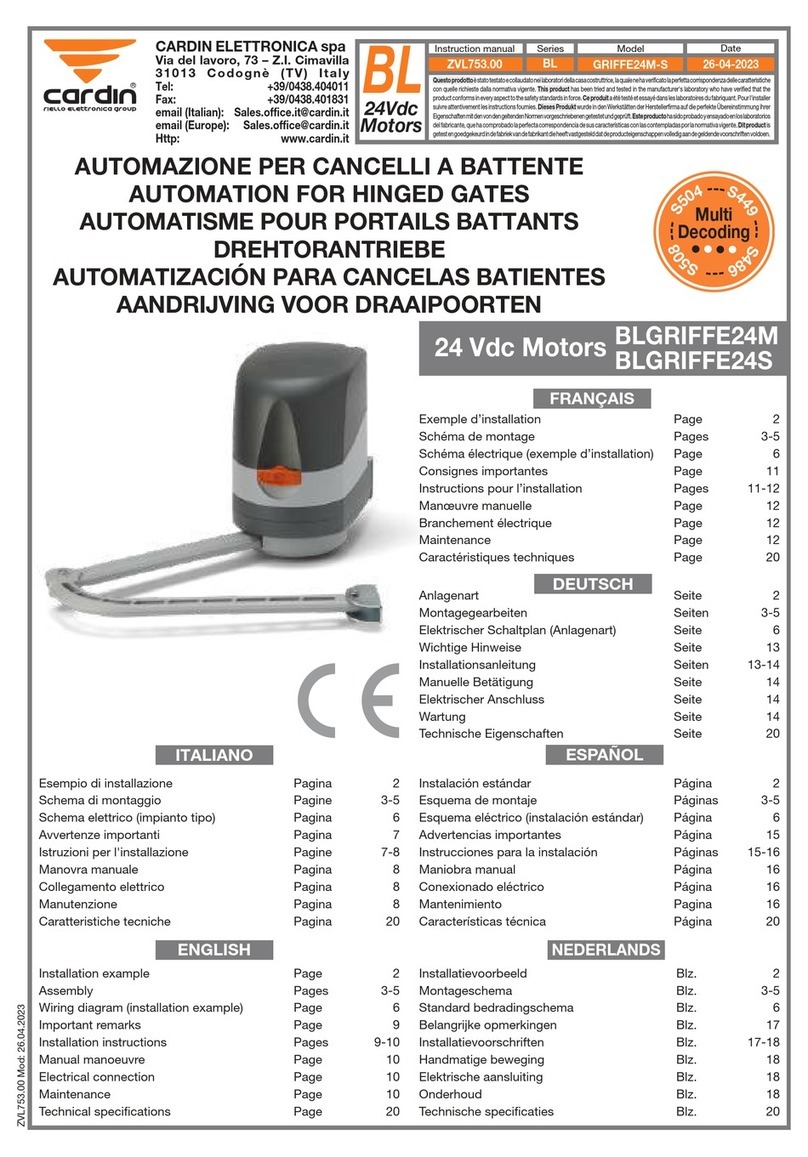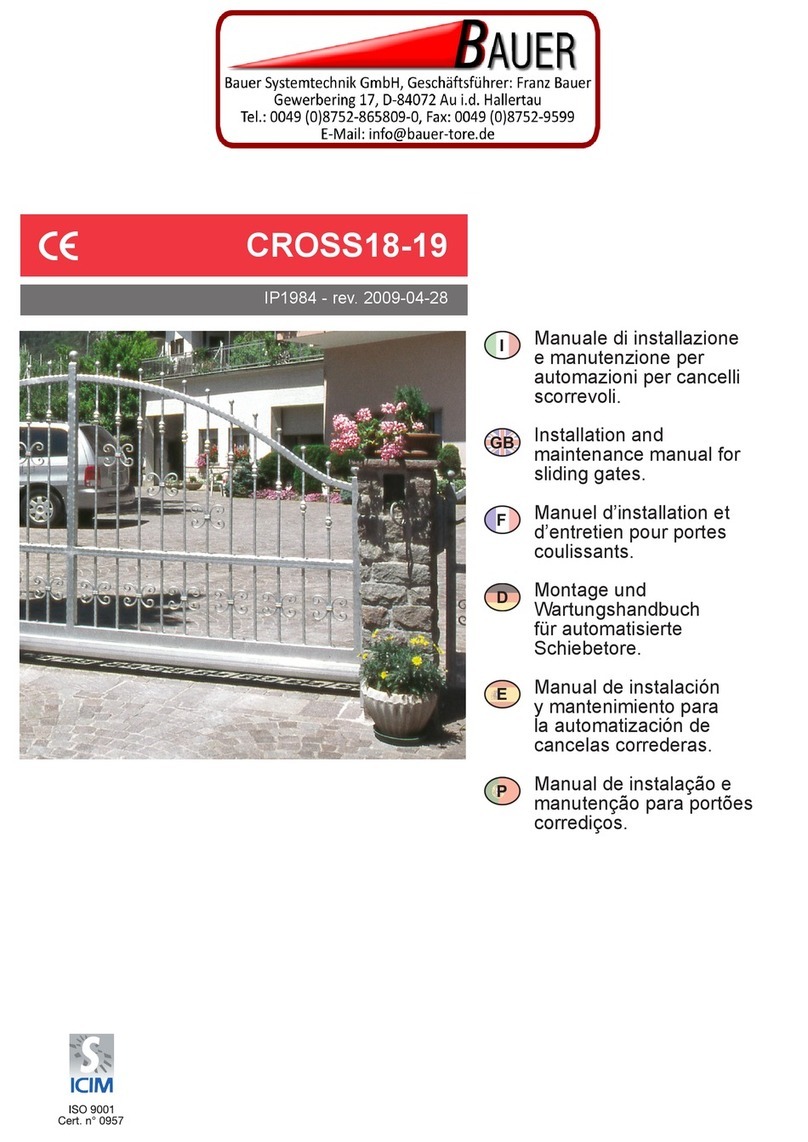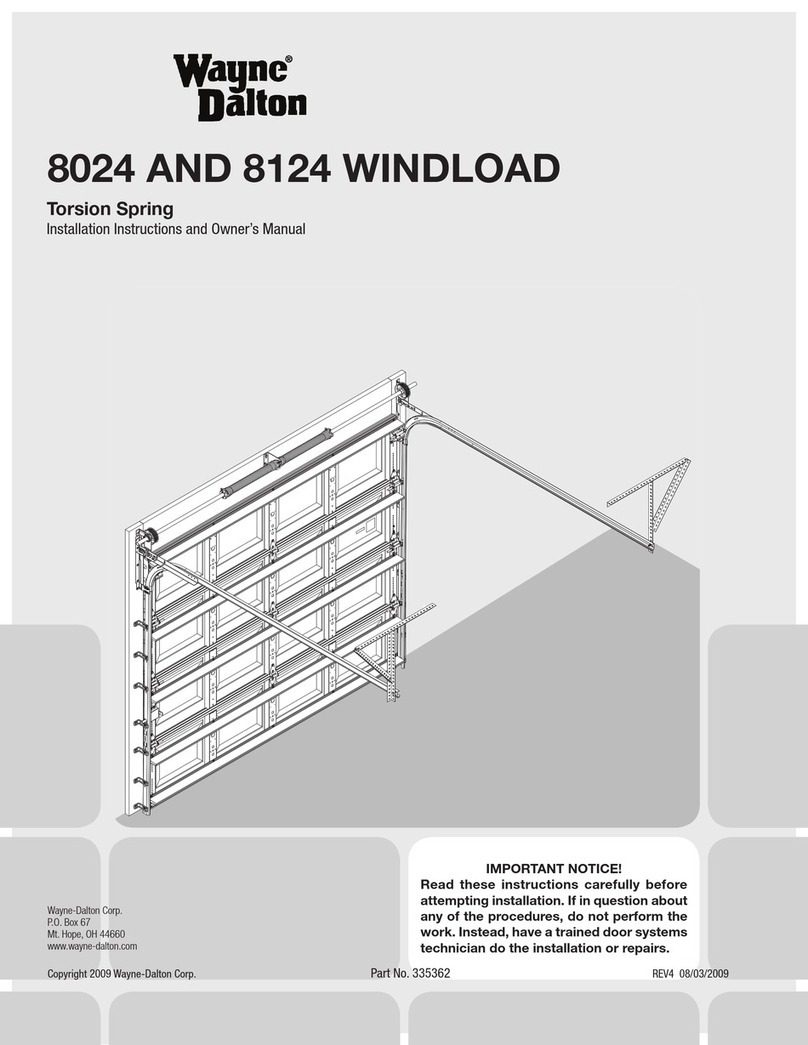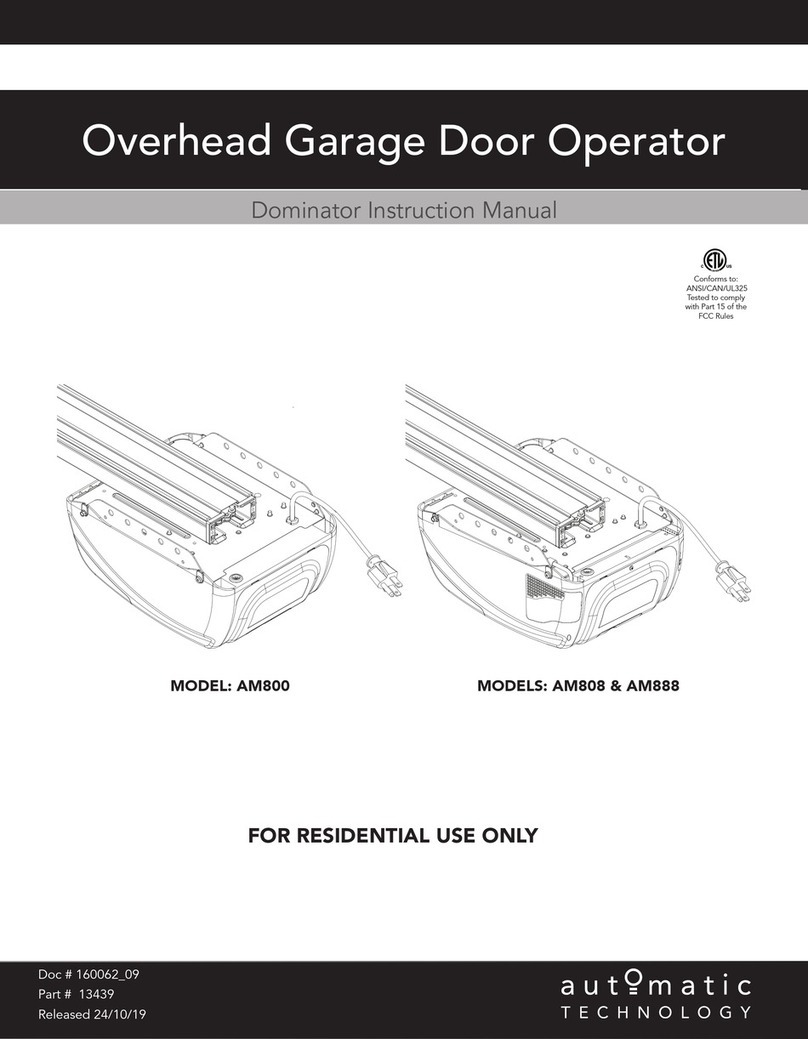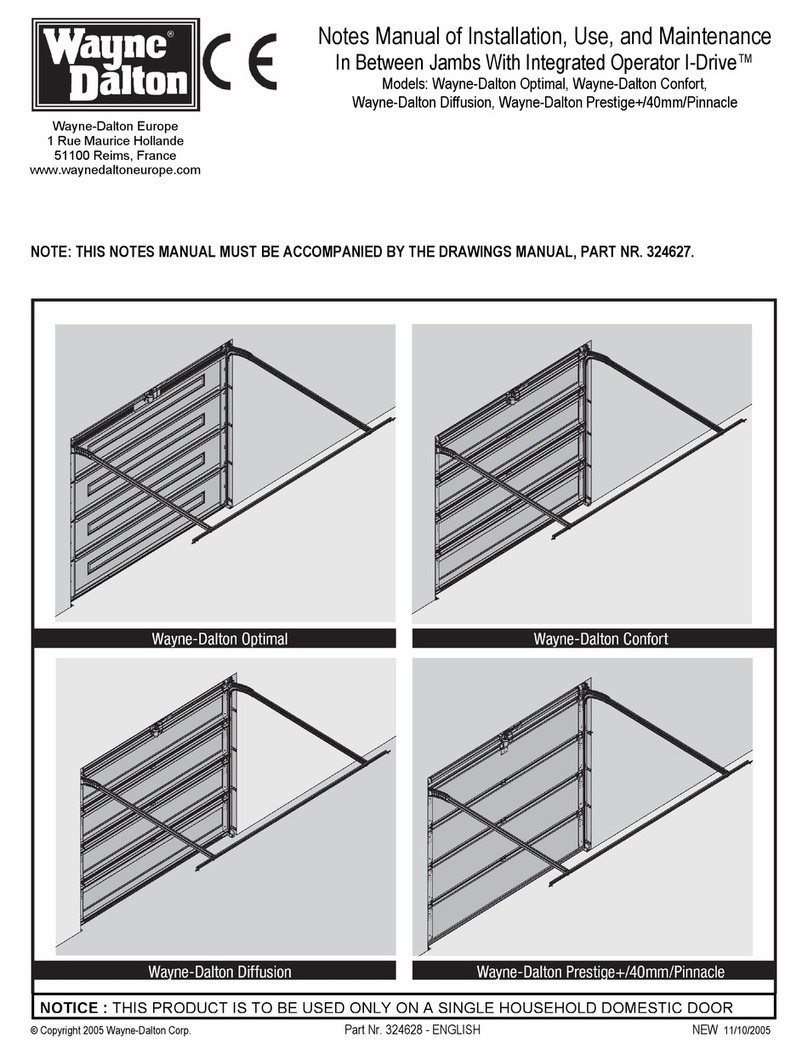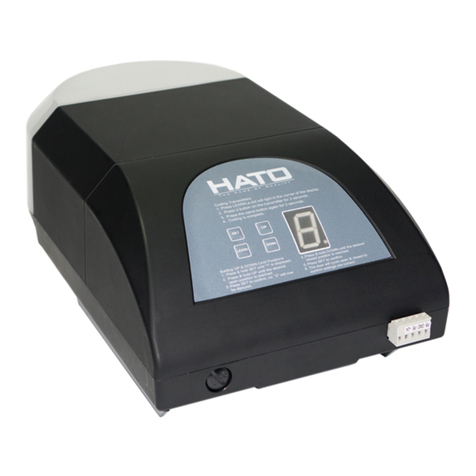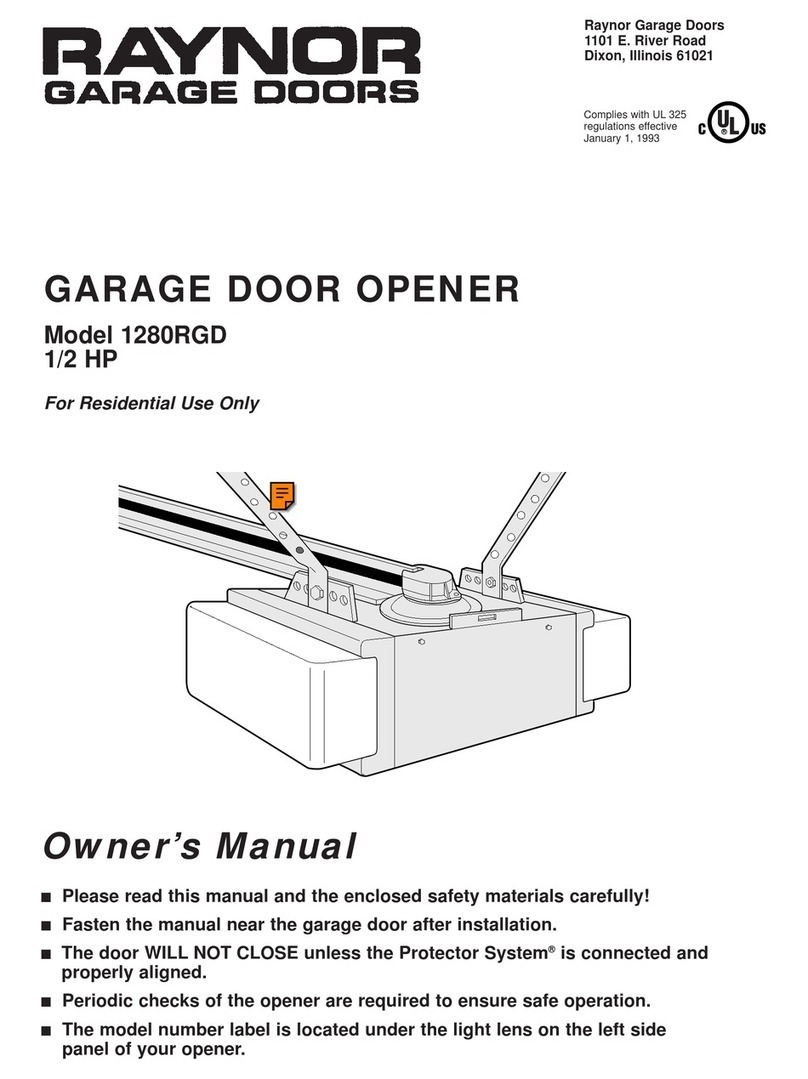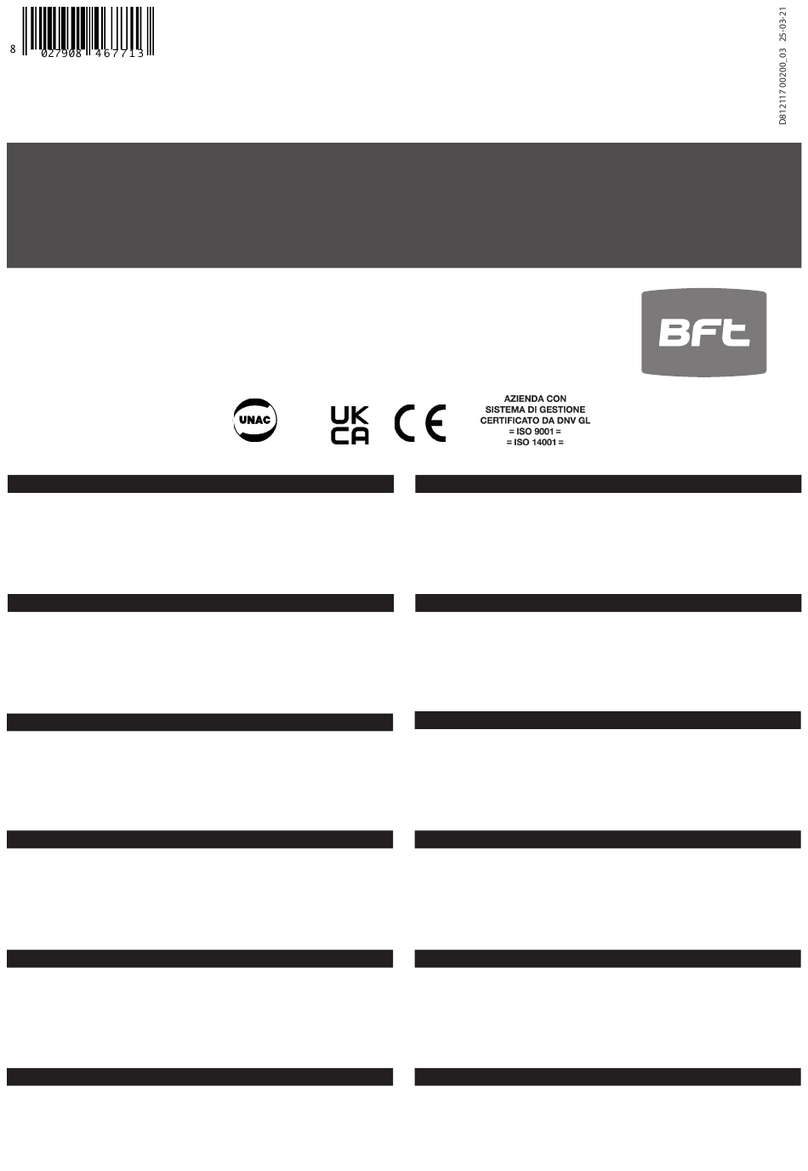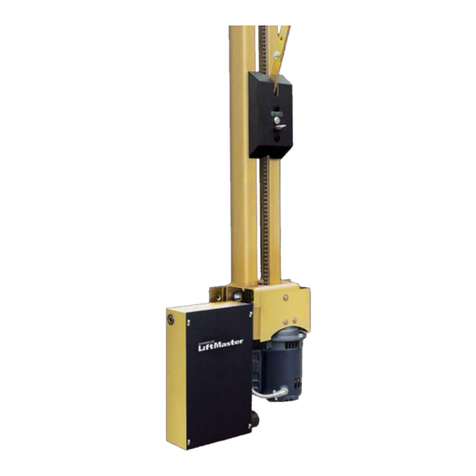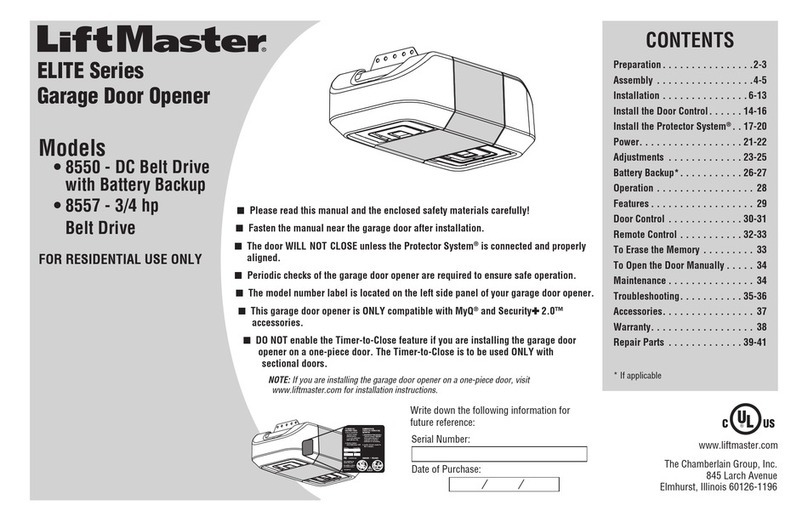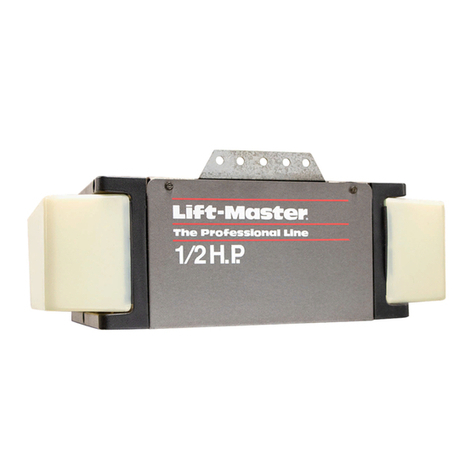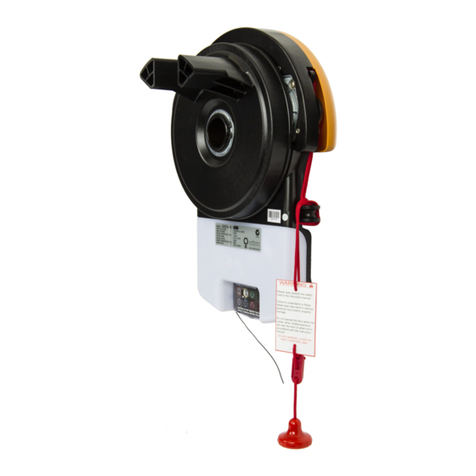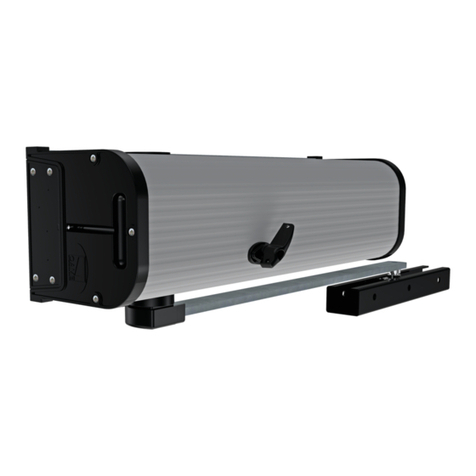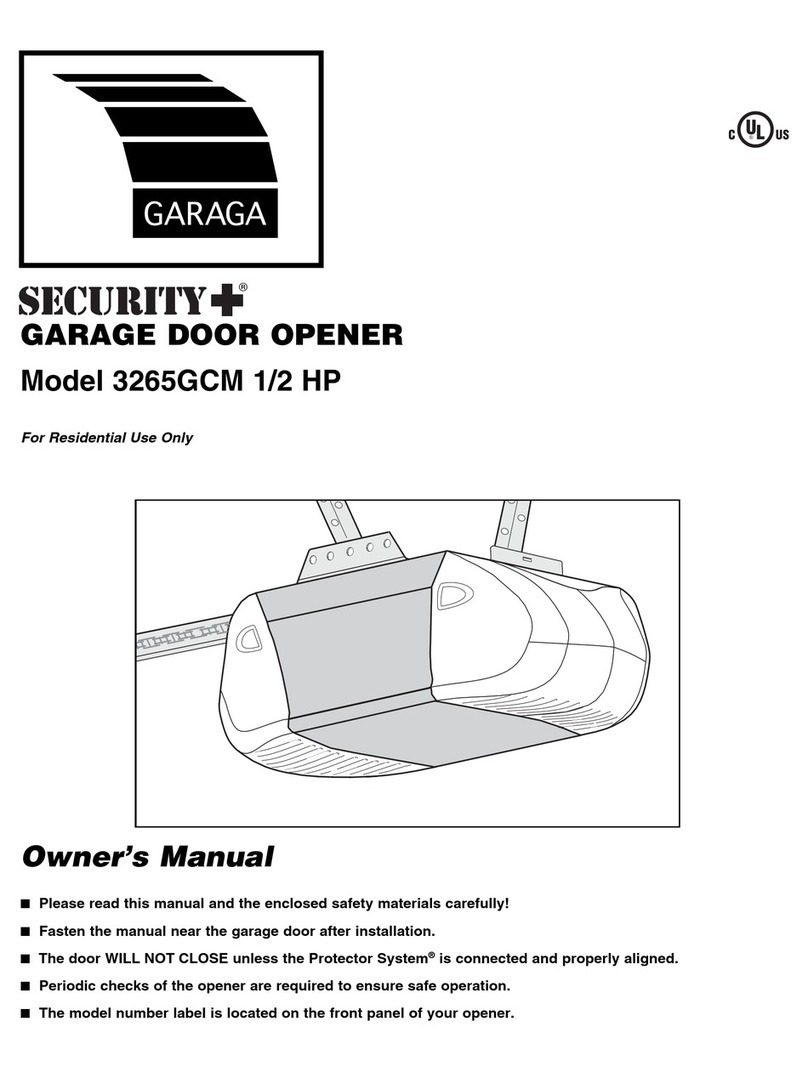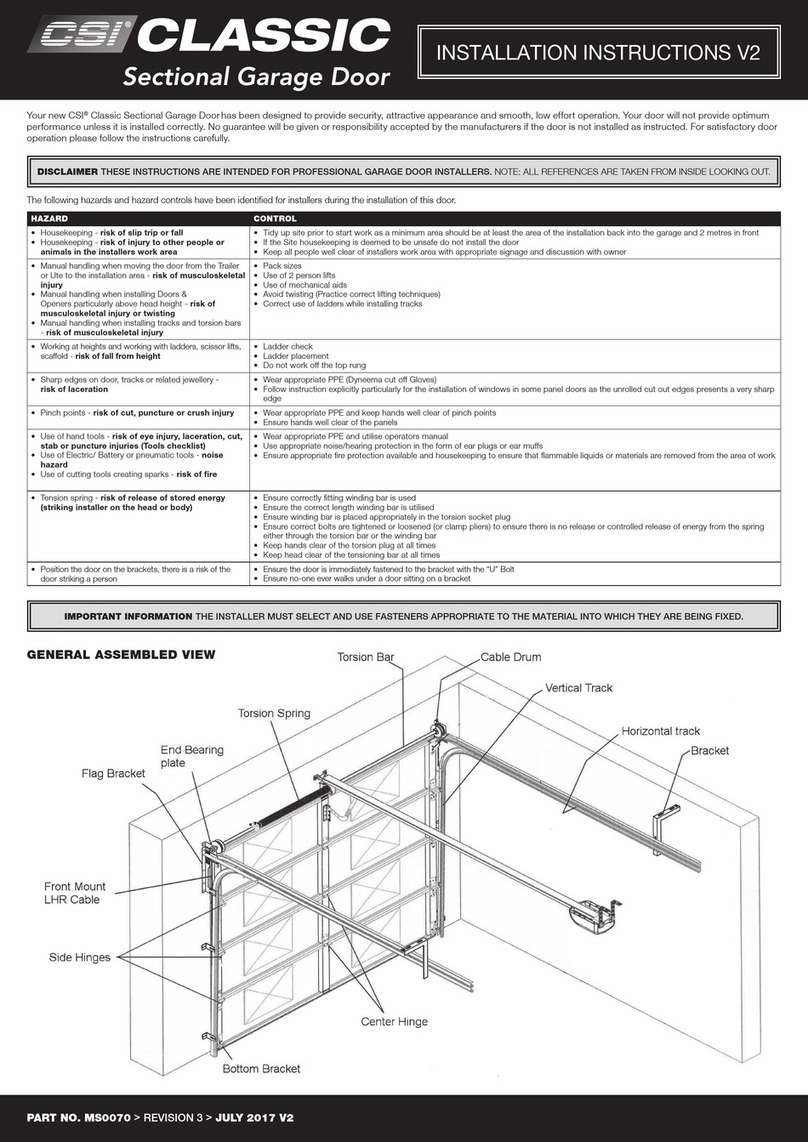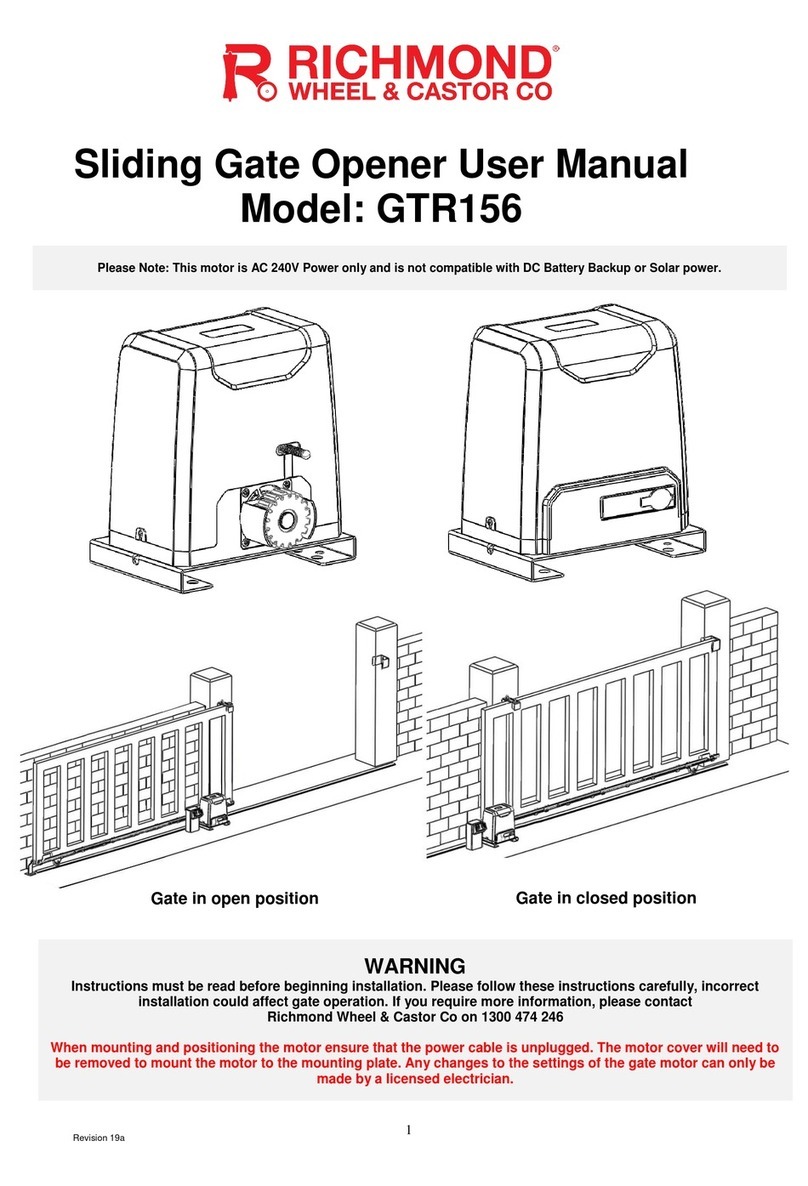
3
IMPORTANT INSTALLATION INSTRUCTIONS
To reduce the risk of SEVERE INJURY or DEATH:
1. READ AND FOLLOW ALL WARNINGS AND
INSTRUCTIONS.
2. Install garage door opener ONLY on properly
balanced and lubricated garage door. An
improperly balanced door may NOT reverse when
required and could result in SEVERE INJURY or
DEATH.
3. ALL repairs to cables, spring assemblies and
other hardware MUST be made by a trained door
systems technician BEFORE installing opener.
4. Disable ALL locks and remove ALL ropes
connected to garage door BEFORE installing
opener to avoid entanglement.
5. Install garage door opener 7 feet (2.13 m) or more
above floor.
6. Mount the emergency release within reach, but at
least 6 feet (1.83 m) above the floor and avoiding
contact with vehicles to avoid accidental release.
7. NEVER connect garage door opener to power
source until instructed to do so.
8. NEVER wear watches, rings or loose clothing
while installing or servicing opener. They could be
caught in garage door or opener mechanisms.
9. Install wall-mounted garage door control:
• within sight of the garage door.
• out of reach of small children at a minimum
height of 5feet (1.5m) above floors, landings,
steps or any other adjacent walking surface.
• away from ALL moving parts of the door.
10. Place entrapment warning label on wall next to
garage door control.
11. Place manual release/safety reverse test label in
plain view on inside of garage door.
12. Upon completion of installation, test safety reversal
system. Door MUST reverse on contact with a
1-1/2" (3.8 cm) high object (or a 2x4 laid flat) on
the floor.
13. To avoid SERIOUS PERSONAL INJURY or DEATH
from electrocution, disconnect ALL electric and
battery power BEFORE performing ANY service or
maintenance.
14. DO NOT install on a one-piece door if using devices
or features providing unattended close. Unattended
devices and features are to be used ONLY with
sectional doors.
15.
SAVE THESE
INSTRUCTIONS.
Important Safety Instructions
NOTICE: This device complies with Part 15 of the FCC rules and Industry Canada’s
license-exempt RSSs. Operation is subject to the following two conditions: (1) this device
may not cause harmful interference, and (2) this device must accept any interference
received, including interference that may cause undesired operation.
Any changes or modifications not expressly approved by the party responsible for
compliance could void the user’s authority to operate the equipment.
This device must be installed to ensure a minimum 20 cm (8 in.) distance is maintained
between users/bystanders and device.
This device has been tested and found to comply with the limits for a Class B digital
device, pursuant to part 15 of the FCC rules and Industry Canada ICES standard. These
limits are designed to provide reasonable protection against harmful interference in a
residential installation. This equipment generates, uses and can radiate radio frequency
energy and, if not installed and used in accordance with the instructions, may cause
harmful interference to radio communications. However, there is no guarantee that
interference will not occur in a particular installation. If this equipment does cause
harmful interference to radio or television reception, which can be determined by turning
the equipment off and on, the user is encouraged to try to correct the interference by one
or more of the following measures:
• Reorient or relocate the receiving antenna.
• Increase the separation between the equipment and receiver.
• Connect the equipment into an outlet on a circuit different from that to which the
receiver is connected.
• Consult the dealer or an experienced radio/TV technician for help.
